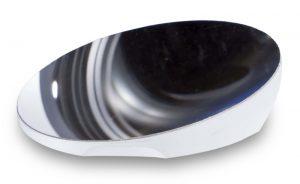Dissecting the Optical Coating Process and How Metals Can Alter the Overall Quality
Summary: The type of metal utilized in the manufacturing process makes a heap of a difference.
 The thin film vacuum coating process is an integral part of the manufacturing industry, such as silicon wafers and mirrors, and plays a large part in the quality and output of the aforementioned. This article will discuss the various ways a user can coat a substrate and the benefits that one can obtain utilizing certain metals.
The thin film vacuum coating process is an integral part of the manufacturing industry, such as silicon wafers and mirrors, and plays a large part in the quality and output of the aforementioned. This article will discuss the various ways a user can coat a substrate and the benefits that one can obtain utilizing certain metals.
Simple Optical Coating Processes
One of the most basic types of optical coatings revolve around thin layers of metals, like aluminum, deposited. The process known as silvering, is when a basic metal is deposited on a glass substrate to create a mirrored surface. Now, the metal that’s used essentially determines the reflection characteristics of the mirror itself. For example, aluminum is the cheapest metal available and is the most common coating. However, the amount of reflectivity is roughly around 88%-92% over the visible spectrum as opposed to silver, which yields around 95%-99%. This is a substantial difference when it comes to the production process. Each type of metal offers a varied range of reflectivity. While one metal may yield a reasonable reflectivity rate, it could also lack in limit the reflectivity in wavelengths shorter than a designated distance.
Equipment Utilized
Notably speaking, the PVD coating equipment also plays an important role in the output as well. The higher quality the system, the more options one has to work with the substrate. In this day and age, the more modalities that are available, the more versatile the substrate will be when it’s completed. This allows for enhanced features and characteristics using metals that normally will not allow for this.
Bio: Denton Vacuum, LLC manufactures the finest vacuum coating systems available today. For more information, speak with one of their representatives today.



